



The Black Russian Terrier, also known as Blackie, comes from Russia. It is part of the UKC, Guardian Dog Group, and the AKC, Working Dog Group. This dog breed was developed by the Russian military in 1930. The Black Russian Terrier has been used for guarding, as sled dogs, and for herding purposes.
Brief History
The Russian military at the Red Star Kennel crossed the Rottweiler, Giant Schnauzer, and Airedale, and a few other dog breeds, so that they could develop a breed that was also a multi-purpose worker. Both scientists and breeders worked together to develop the Black Russian Terrier. It is thought that up to 17 dog breeds were used for breeding, including the Newfoundland to develop a sound temperament.
The BRT is a strong military dog that could patrol up and down border fences for hours without tiring. It was fast enough to catch and hold down a prisoner at Stalin’s prison camps. The BRT has up to 20% in Terrier genetic make- up. By the mid 1950’s, these dogs were no longer needed as much, and were sold to breeders.
The Russians nicknamed this breed the “Black Pearl of Russia.” In 2004 the Black Russian Terrier was admitted to the AKC. That said, it was only in 1981 that the BRT was named a breed by the Soviet Ministry of Agriculture.
Physical Description
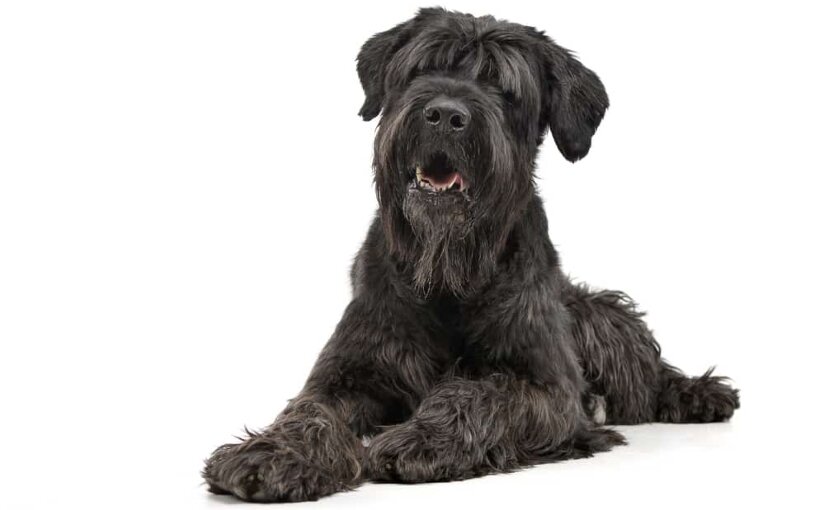
The Black Russian Terrier is a powerful, and muscular dog breed. It is longer than it is tall. The head is long with a flat skull. The wedge-shaped muzzle has a black nose. With eyes that are small and dark, the ears are drop, short, and triangular. The chest is deep. This dog breed has large bone, and well-developed muscles. There is a moustache and beard on the face. Lips are thick and fleshy. The neck is thick and powerful. The entire body is one of strength. The coat is a double coat, with the untrimmed coat being 1.5 to 6 inches. The outercoat is rougher than the inner coat. The only acceptable color is black, or black with gray scattered hairs. The movement is smooth and fluid. The temperament is calm and confident.
Temperament
The Black Russian Terrier is energetic, yet calm and courageous. This is a self-assured dog breed that trains easily, and is highly adaptable. This breed is wary of strangers, and protective of family. It was originally bred to guard and hunt. The Black Russian Terrier does not enjoy strangers approaching his space. This breed is very loyal to family, and very responsive to his dog parents.
Special Needs
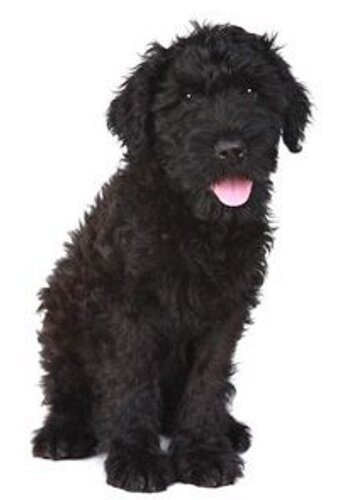
The Black Russian Terrier needs plenty of positive training starting at puppyhood. This breed is very intelligent, sometimes stubborn, and extremely active. It is important to start a good positive training schedule with your puppy early on. This dog breed has a dominating character, and will try to get his way. Training must never be punishment based. Reward based positive dog training works well for this breed.
An untrained Black Russian Terrier can be hyperactive and rambunctious. The Black Russian Terrier needs plenty of attention combined with exercise. Socialization with this breed must begin during the first four weeks of puppyhood, and continue throughout his lifetime. This dog breed needs a very experienced dog parent. It can easily live in the city or countryside. Positive dog training with this dog breed has to start early. Ample exercise is recommended in the form of agility and obedience classes. This dog breed needs lots of kindness, understanding, and respect. Consistency in positive dog training is key to a well-balanced dog.
Possible Health Concerns
The Black Russian Terrier may be susceptible to the following health conditions:
- Hip Dysplasia: This is an abnormal development of the hip joint in large dog breeds like the Black Russian Terrier. It is generally characterized by a loose joint, and then degenerative joint disease. This dog breed should be fed a high-quality diet that is geared towards their life stage. Puppy Black Russian Terriers should only be fed high-quality puppy dog food. Excessive growth, types of exercise, nutritional factors, and hereditary factors all come in to play with hip dysplasia.
- Hyperuricosuria (HU). This is a genetic condition that affects the Black Russian Terrier. It is caused by a mutated gene that is autosomal recessive. Dogs affected by this cannot break down protein. Consult with your veterinarian for advice.
- Addison’s Disease: This affects the adrenal glands, and causes the deficient production of glucocorticoids. Symptoms may include weakness, vomiting, anorexia, weight loss, and trembling. Consult with your veterinarian.
- Elbow Dysplasia: This works in the same way as hip dysplasia and affects the dog’s elbow joint. Consult with your veterinarian.
- Juvenile Laryngeal Paralysis & Polyneuropathy (JLPP) This is a new disorder in the Black Russian Terrier, and it is seen in both Europe and the U.S. Consult with your veterinarian for information.
- Luxating Patellas. This is a hereditary condition that is caused by the abnormal development of the kneecap(patella).X-rays will aid in seeing the severity of the displacement. Treatment usually involves surgical options.
Exercise
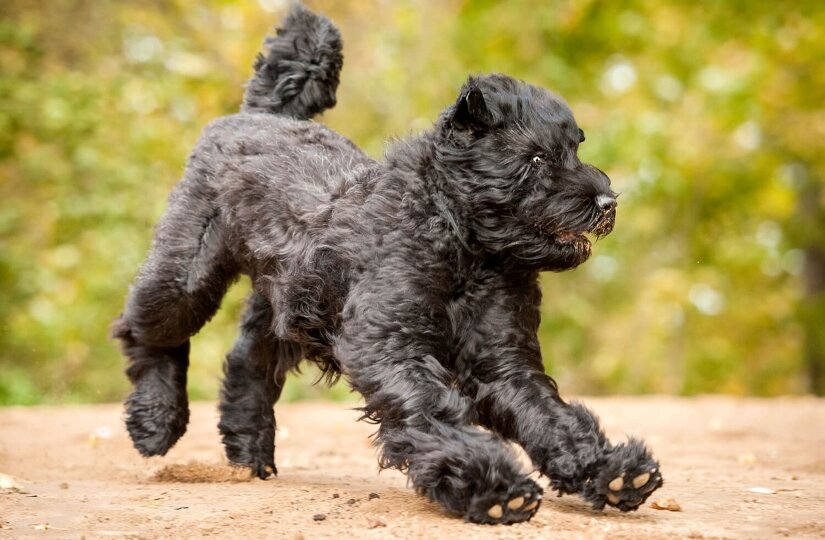
Obedience training for the very responsive Black Russian Terrier can take the form of in-home positive dog training with Skype combined with several on-site dog training classes. This allows for both Black Russian Terrier and dog parent to socialize with other dogs and people. This dog breed is powerful, willful, and smart. It will need at least 40 minutes of exercise every day. This will include bike runs, jogging, swimming, hiking, and even agility trials.
Obedience Trials today are very popular, and it is the building block for all other canine sports. You and your dog will bond, and really get to know each other’s quirks. Additionally, the Black Russian Terrier requires mental stimulation. This is a very smart and active dog breed that deserves the best!
The intelligent and very focused Black Russian Terrier needs regular daily walks and off-leash trips to the dog park and beach. This is very important for this dog breed. This dog breed thrives if you fill each day with love, games and the right type of exercise! It is crucial for good health and mental stimulation. That said, the Black Russian enjoys going everywhere, but must be very socialized. This dog breed does well with agility, rally, obedience, and Schutzhund competitions.
Nutrition
Feed your Black Russian Terrier the best high-quality dog food that you can afford. Here are some feeding tips to follow:
- There is no “best diet”- dogs are individuals. A diet that works for one active dog breed may not be the best for another. Age, energy level and individual medical concerns play a large role for each patient.
- The recommended guidelines on bags often contain more calories than some dogs need. Check with your veterinarian for the best nutritional advice, most especially if your dog takes part in canine sports.
- Feed a complete and balanced food for the appropriate life stage of your dog.
All dog parents, regardless of the breed need to understand that the life stage that a dog food is marketed for, may not be the same life stage for which the food actually meets the minimum requirements.
Consult with your veterinarian if you need advice about which dog food to feed your dog.
Grooming
The Black Russian Terrier has a scruffy, double coat with a thick, soft under coat. This needs regular maintenance so as to prevent matting, and tangles. Trimming around the mustache, beard, and ears is required, with some dog parents preferring to use a professional groomer for an all-round body clipping.
Daily grooming is necessary with bathing recommended as needed, since this breed loves rolling around in horse or cattle manure. They are very active, and do enjoy being bathed and feeling refreshed. Regular ear cleaning and daily tooth brushing is needed to prevent tartar buildup. Nails need to be trimmed as needed. As with all dog breeds it’s necessary to bring your dog in for a twice yearly dental cleaning.
Adopting a Welsh Terrier
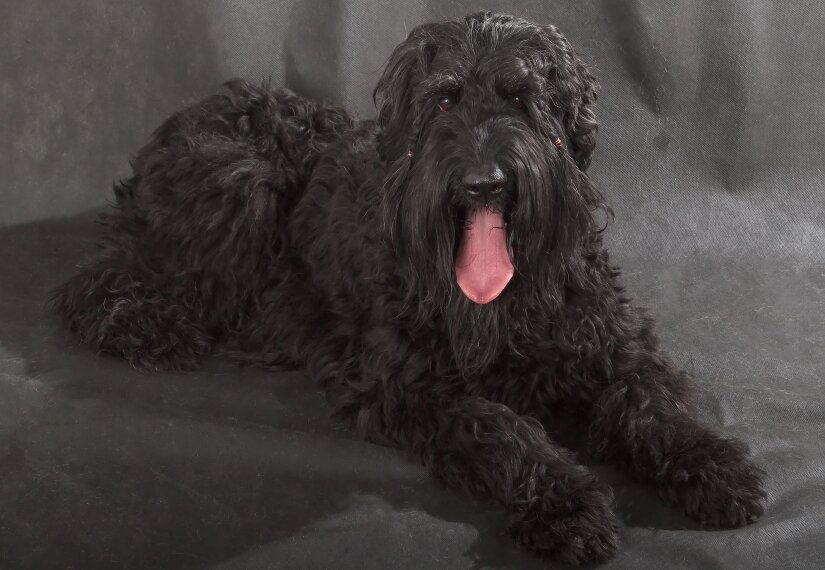
You and your Black Russian Terrier will spend a lifetime together! The human-dog bond between a Black Russian Terrier and human is like- no- other. This breed adores his human parent!
With so many dogs up for adoption, many dog lovers have decided that adoption is the only way to go. In the weeks after an adoption you may face numerous problems. These are easily overcome, most especially with a breed like the Black Russian Terrier. Digging, chewing and possible house-training issues may arise. Make sure that you have the time, patience and resources to look after a new furry best friend. Positive dog training is the only way to go with this dog breed, that is easy-to-train.
Shelters today help new pet parents with training and behavioral issues. Finding the right match for your lifestyle means visiting and spending time with your new dog at the shelter first. Speak to shelter workers, and try to find out as much as you can about the dog’s history, so that you can move forward, and build a positive future filled with consistency in reward based training, and plenty of TLC!
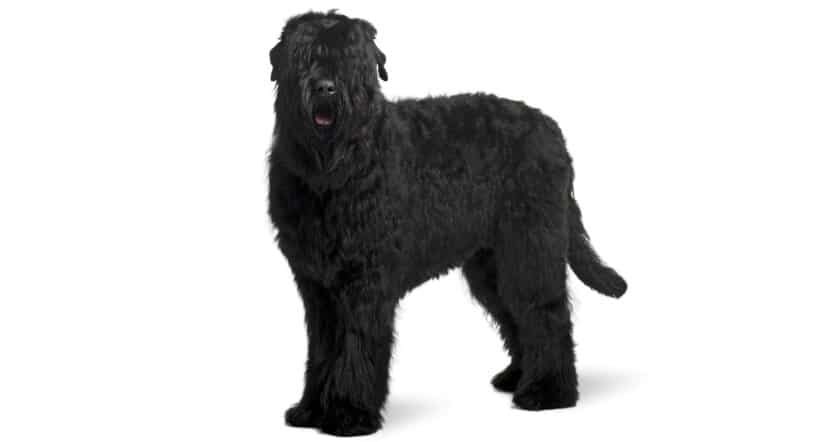
Our BRTs have done poorly on diets that include meat protein other than fish or rabbit. They developed allergies with beef, chicken, turkey, etc. Never feed “the best you can afford”. Feed the best or you cannot afford a BRT. Don’t put it on the dog. These dogs cannot live outside of the house or apart from the family. If you try that, you will get a very powerful dog that you cannot control. They must be bonded with the family. They will follow you inside of your house and that should be encouraged. They must be positively socialized from 3 months on. Never use force to socialize, harsh words, etc. These dogs are sensitive to you and read your emotional level very accurately. Never make these dogs defensive or afraid of you. If you do, you will have a dog capable of great harm instead of great affection. BRTs are exceptionally smart and will never let you down provided you never let them down. If you have two, they will work as a team. They are exceptional guard and alert dogs. You can leave your doors unlocked if you have a BRT.